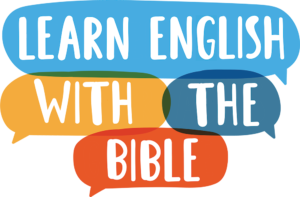
The Present Simple Tense
In English, the present simple tense isn’t used to tell people what you are doing right now. Instead, it’s used to talk about habits and facts; things that are always true. Look at John 6, verse 35:
Jesus said to them. “I am the bread of life. He who comes to me will not be hungry, and he who believes in me will never be thirsty.
“Is,” “comes,” and “believes” are all used in the present tense. Jesus is using the present tense to tell us that these things are facts. They are things that are always true.
The Present Simple Talks About Habits and Facts
Here’s another example from John 10, verses 2-4:
How to Make the Present Simple
you enter
he enters, she enters, it enters
you enter (plural)
they enter
Because the simple present tense uses the verb in in its base form, there are very few irregular spellings. However, with the third person that needs an “s,” you may need to add an “es” instead. Some common examples are “go – goes” and “do – does.” Unfortunately, when verbs are irregular, you will just have to practice them to learn how they are spelled.
Using the Present Simple
to Talk About the Future
Christmas will be in two weeks.
Asking Questions With Present Simple
Questions with "To Be"
It’s very easy to ask a question with the present simple. If you are using the verb “to be,” all you have to do is reverse the subject and the verb. Here are some examples:
Christmas is in two weeks.
Is Christmas in two weeks?
He is the shepherd of the sheep.
Is he the shepherd of the sheep?
Questions with All Other Verbs
All other verbs need a helping verb when they are used in a question. You will need to use the helping verb “do” in front of the subject when you ask a question.
I need a ticket.
Do I need a ticket?
You need a ticket.
Do you need a ticket?
He needs a ticket.
Does he need a ticket?
We need a ticket.
Do we need a ticket?
They need a ticket.
Do they need a ticket?
Look at the third person singular – “He needs a ticket.” When we make it into a question, the “s” moves from the regular verb to the helping verb “does.”
Notice also that “does” is irregular and is spelled with “-es.”
Making Negative Sentences With the Present Simple
Negative Sentences with "To Be"
It’s very easy to make a negative sentence when you use the verb “to be.” Just add the word “not” after the verb.
I am hungry.
I am not hungry.
You are late.
You are not late.
She is at work.
She is not at work.
We are at church.
We are not at church.
They are from New York.
They are not from New York.
Negative Sentences with All Other Verbs
We need that helping verb “do” when we make negative sentences with any verb other than “to be.” But it’s pretty simple – just put the words “do not” or “does not” before the verb.
I eat breakfast at 7:00 am.
I do not eat breakfast at 7:00 am.
You like ice cream.
You do not like ice cream.
Timmy wants a puppy.
Timmy does not want a puppy.
We put gas in the car.
We do not put gas in the car.
They watch football on TV.
They do not watch football on TV.
Again, you see that in the third person singular, we take the “s” from the main verb and put it on the “do” – making “does.” (with irregular spelling)
Contractions
You will probably not hear native English speakers saying “do not,” “does not,” “are not,” or “is not.” Because we like to say things quickly, over time these words have become contractions – two words become one. The ” ‘ ” (called an “apostrophe”) takes the place of a missing vowel.
do not = don‘t
does not = doesn‘t
are not = aren‘t
is not = isn‘t
We’ll talk more about contractions in another lesson, because there are more contractions that you will want to learn! But for now, use these when you make questions and negative sentences with the simple present tense.
Present Simple Worksheet
The Next Present Tense - Present Continuous
The present simple is actually very simple. But let’s look now at the verb form native speakers use much more often to talk about actions that are happening right now – present continuous.
